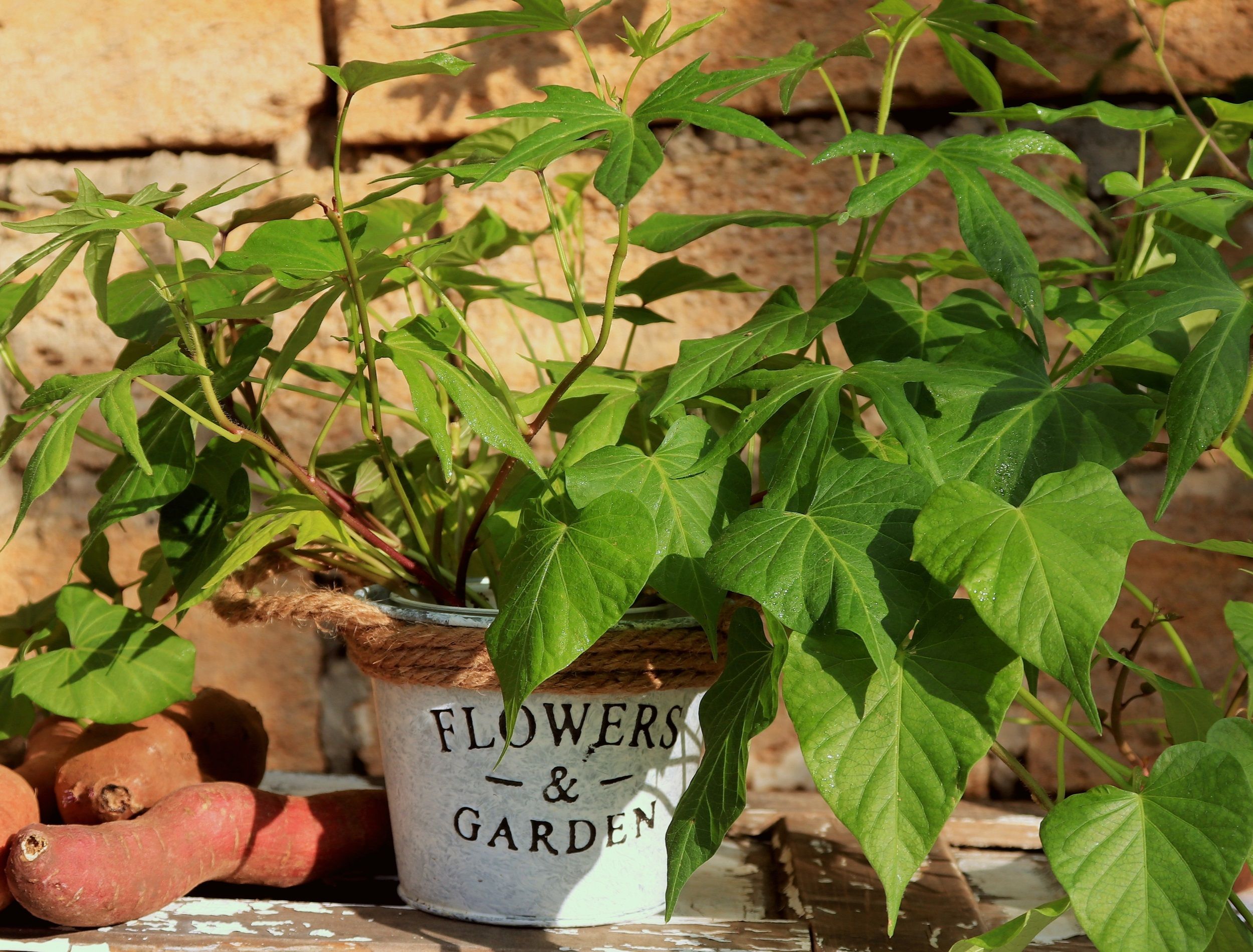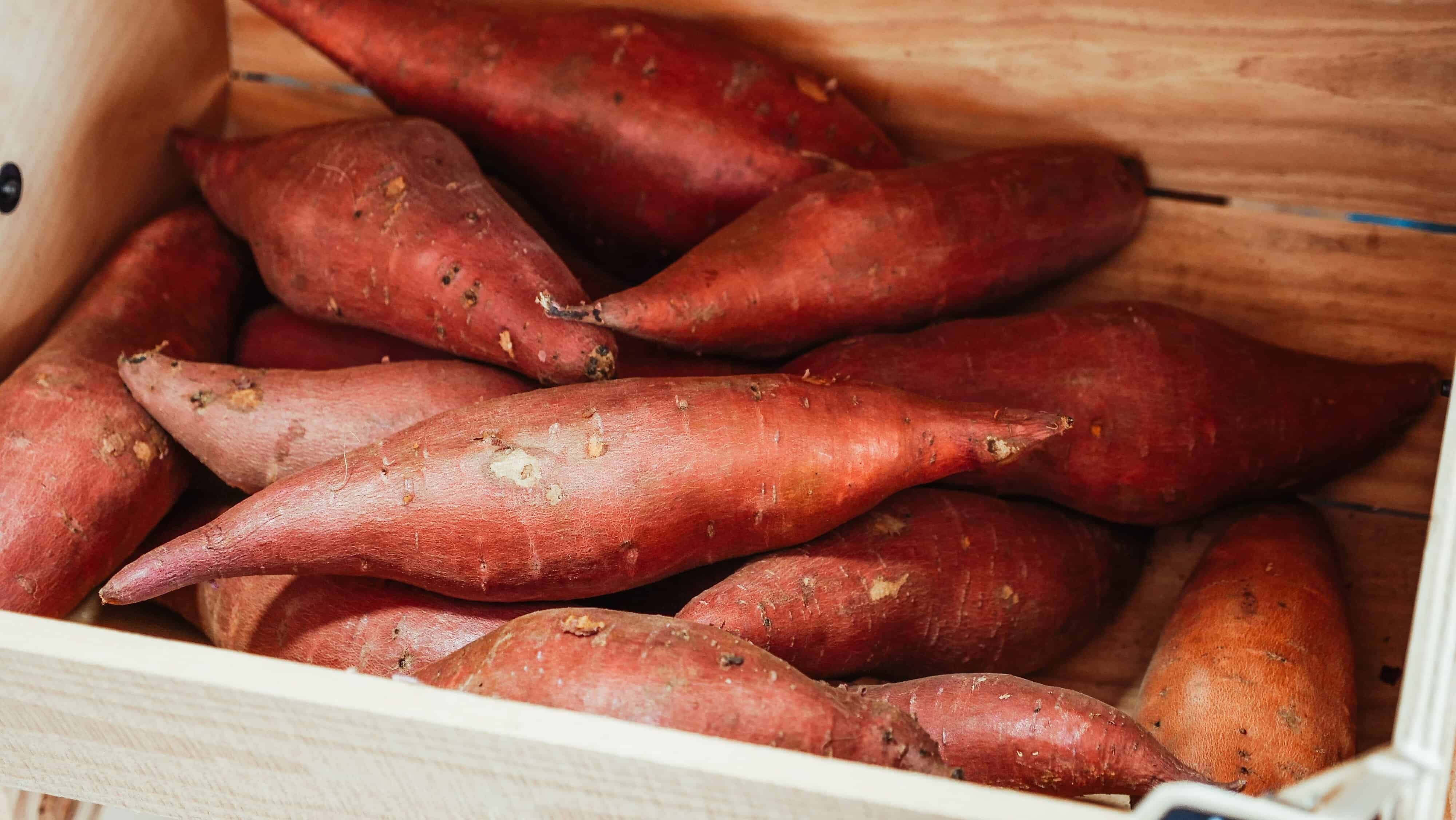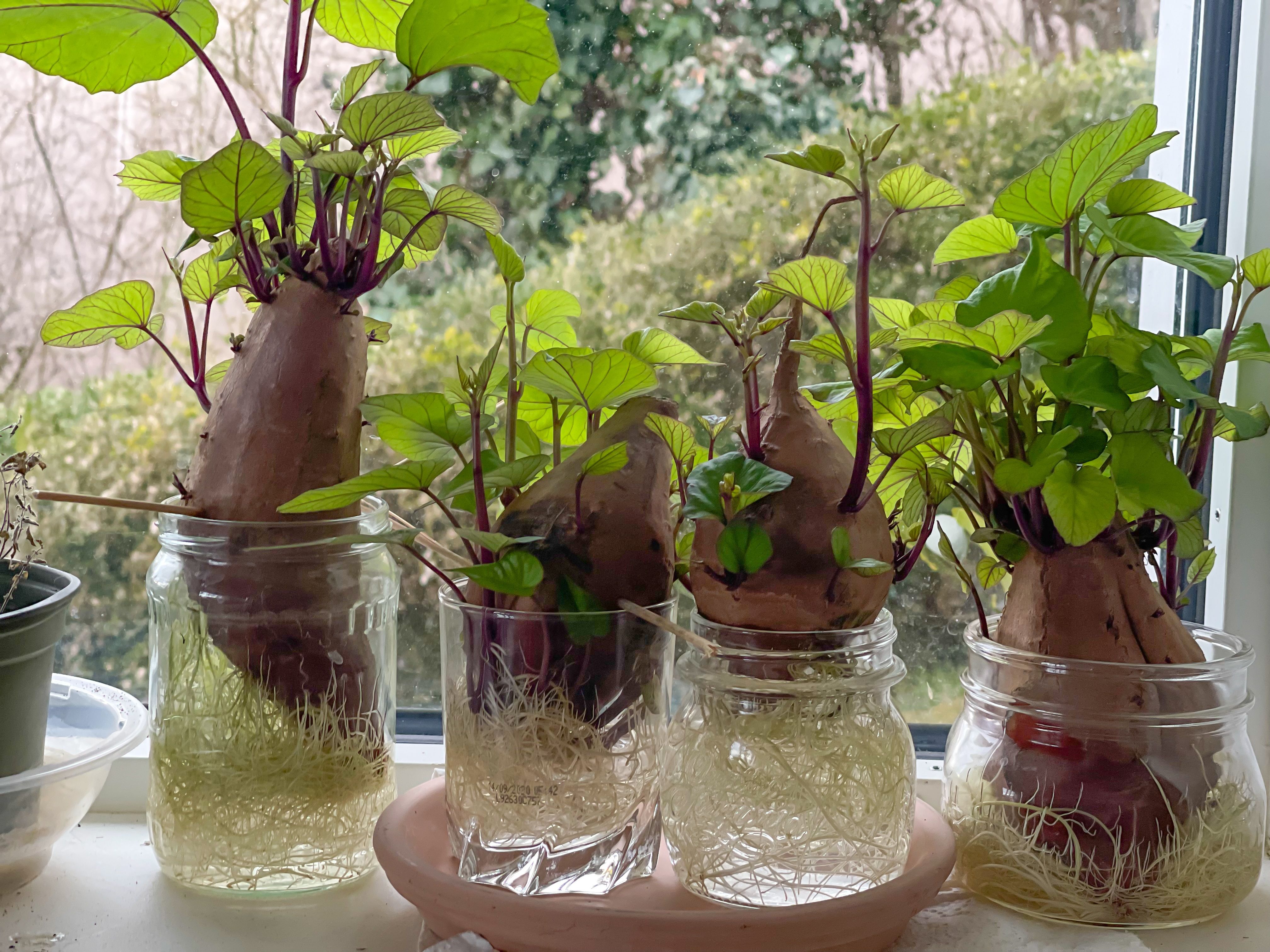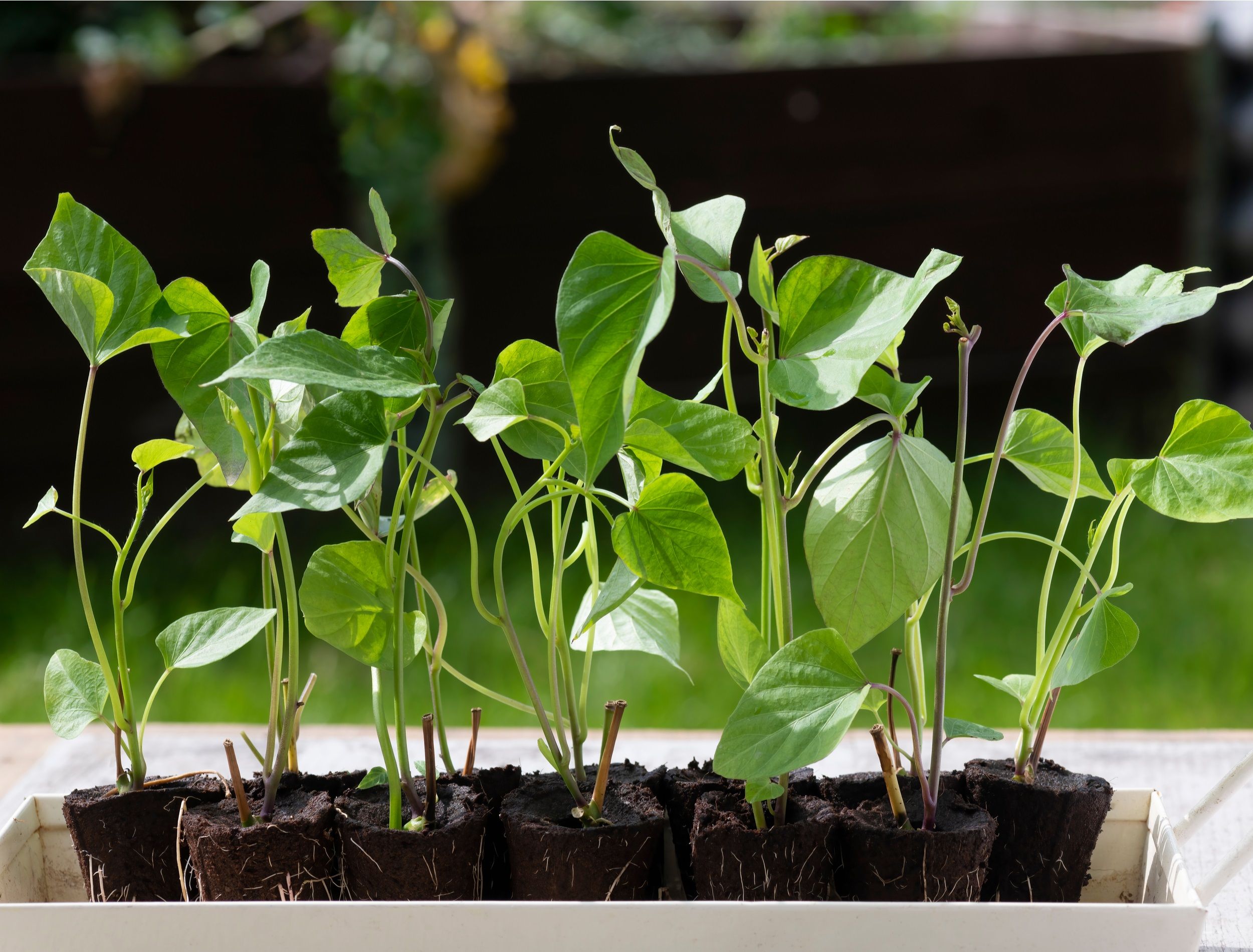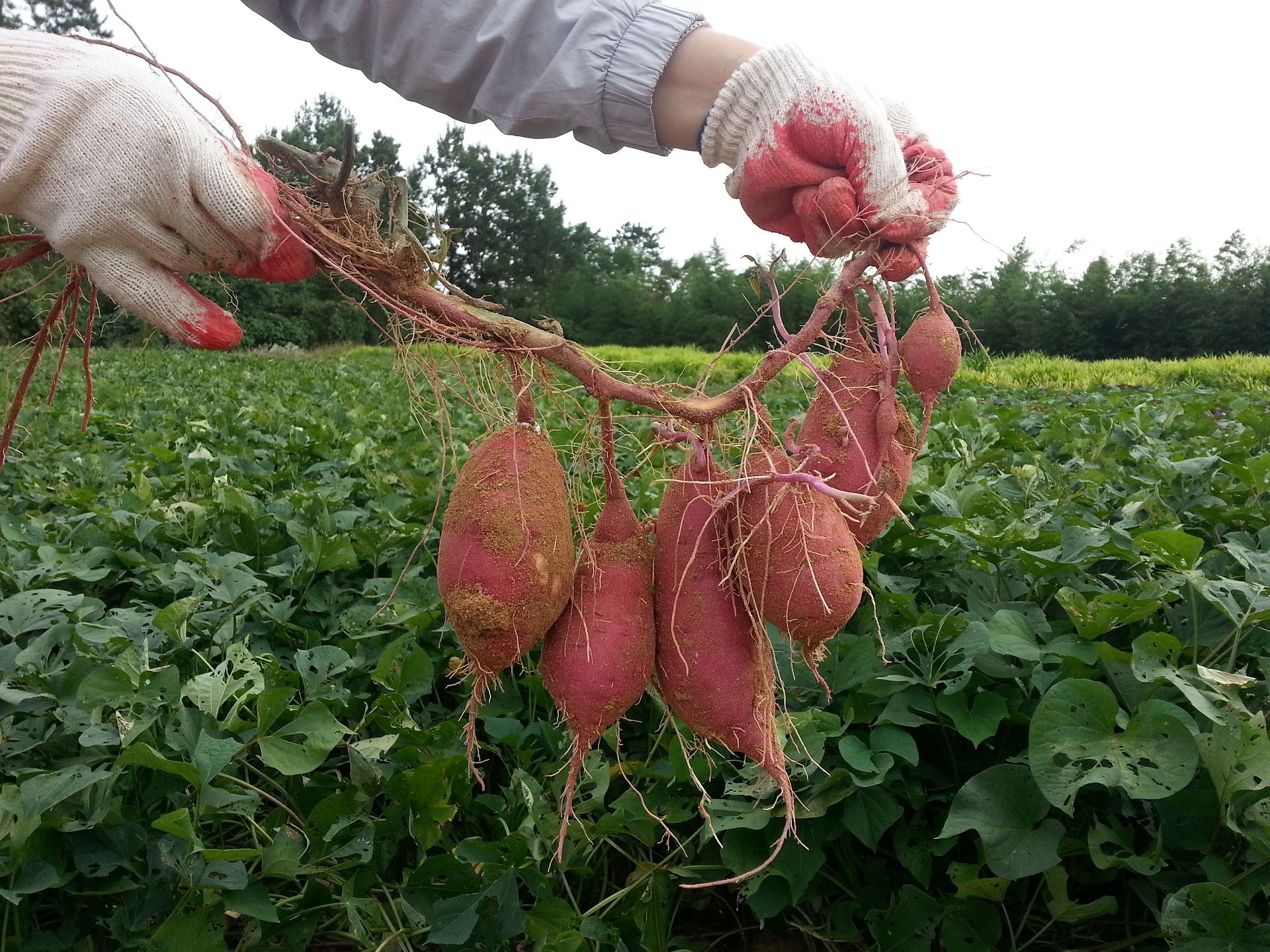Sweet potatoes are a popular root vegetable, known for their mild, starchy, sweet flavor and orange coloring. With that said, there are many varieties, each with different coloring. They make a great holiday dish, though they also do well as a side to chicken and even in potato soups. Though labelled a "potato," the sweet potato is actually in the morning glory family and it is an edible root, not a tuber.
You might have heard that you can grow potatoes from potatoes, but if you are a lover of the scrumptious sweet potato, you will be happy to hear you can also grow them from scraps! While the premise is the same, the steps for growing these types of spuds are different.
With just a few tools and sweet potato plants, you can enjoy a hearty harvest of this sweet-tasting root vegetable. Learn how you can plant, care for, and harvest this spectacular tater.
Tools You'll Need
Image credits: Olga Bondas via Shutterstock
Before you get to planting and growing your sweet potatoes, there are a few tools you’ll need to gather.
- Sweet potatoes or slips
- Jar
- Clean water
- Toothpicks
- Hand trowel or spade
- High-quality soil
- Garden rake
- Garden hoe
- Gardening gloves
- 15 to 20 gallon container with drainage hole (optional)
What Are Slips?
Image credits: Kindel Media via Pexels
Unlike most other veggies, sweet potatoes are not grown from seed. Instead, they are grown from "slips." Each sweet potato produces "slip" sprouts. They are the vine-like stems that grow from the eyes of the spuds. You can purchase slips from many garden centers or nurseries, or even grow them yourself (learn how below).
Some of the most common cultivars include:
- 'Beauregard': the most widely grown cultivar with sweet, orange flesh that reaches maturity in 90 to 100 days.
- 'Jewel': copper skin and orange flesh, reaching maturity in 120 to 135 days.
- 'Covington': rosy skin and light orange flesh, reaching maturity in 95 to 110 days.
Note: Before growing or purchasing slips, consider if there is enough time left in the growing season for the sweet potatoes, which generally take between 85 to 135 days to reach maturity. The plants require soil temperatures above 65 degrees Fahrenheit, so consider the weather conditions of your area.
How to Grow Sweet Potatoes From Sweet Potatoes
With the right tools and knowledge under your belt, it is time to learn how you can grow sweet potatoes from sweet potatoes.
Step 1: Growing Slips
Image credits: Eurybia via Shutterstock
To grow slips, place your healthy sweet potato in a wide mouth jar or container full of water, ensuring any roots are facing down and the top third of the potato remains exposed. You can place toothpicks in the side of the tater outside of the jar to make sure it does not become fully submerged.
Keep the containers in a warm location with bright, indirect sunlight. Change the water weekly -- otherwise, algae will grow and oxygen will deplete, resulting in a failure to grow. Green vining stems will begin to sprout from the top of the potato within about two weeks.
Once the green sprouts reach about 6 inches in length, you can remove them from the taters by gently twisting them at the connection point with your fingers. Fill a clean jar with water and place the sprouts inside, with the severed ends submerged and the top two thirds exposed. They will grow their own roots in about 10 days. When the roots reach 3 inches, you can plant them.
Step 2: Planting Slips
Image credits: Piyaset via Shutterstock
If you purchase your slips from the store, you can skip step one and move straight to planting. That said, be sure to rinse the roots with water as they may have been chemically treated to prevent premature rooting.
It is best to grow these taters in the spring since they are slow-growing and require warm temperatures and lots of sun to thrive. Ensure the potatoes receive full sun and the soil temperature is at least 65 degrees Fahrenheit with all chance of frost gone.
Transplant the roots at a depth of 3 inches with the stem leaves still above ground, either in a 15 to 20 gallon container or in your garden with well-draining, sandy soil. Plant slips in rows 3 to 4 feet from one another, each row spaced about 12 inches apart, or a single slip in a container, for plenty of room for root growth and development.
Pro Tip: If you do plant slips early, be sure to provide frost protection, such as row covers or a cold frame.
Step 3: Sweet Potato Care
Image credits: Deborah Lee Rossiter via Shutterstock
Newly planted slips will need lots of water to thrive. In the first week, keep the soil moist but not waterlogged and water once daily. In the second week, water every other day. After that, you can water the plants about once a week, allowing the top inch of soil to dry out as sweet potatoes are drought tolerant.
You can fertilize sweet potatoes, but avoid nitrogen-rich fertilizers as they will cause the plants to focus on foliage development over root development. Apply a 5-10-10 fertilizer in early July for optimal growth and root development. Apply mulch around the vines to conserve moisture and prevent weed growth.
Step 4: Harvesting and Storage
Image credits: peter1533 via Pixabay
If you plant in spring after the last predicted frost, you can harvest your sweet potatoes depending on the variety, just in time for Thanksgiving. The foliage turning yellow and frost approaching are generally signs it is time to harvest. The roots should be about 5 to 6 inches in length and 2 inches in diameter.
Carefully use a shovel to dig up the roots and then cure them for five to 10 days in temperatures between 80 and 90 degrees Fahrenheit with 90 percent humidity. If temperatures dip below 70 degrees Fahrenheit, curing will fail.
Then, store in a cool location, always above 60 degrees Fahrenheit, for three to six months.
One Sweet Potato, Two Sweet Potato!
Growing sweet potatoes from sweet potatoes is a great way to save money and enjoy the scrumptious root. In fact, sweet potato leaves and shoots are also edible! With the right tools and a little patience, you'll be serving all types of sweet potatoes in no time, whether they are roasted in honey and cinnamon, baked in garlic and parmesan, or mashed to creamy perfection.
Do you have any tips for growing, harvesting, and cooking sweet potatoes? Share in the comments below!


